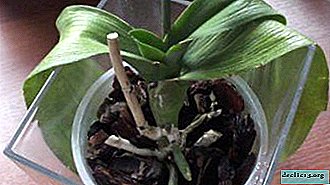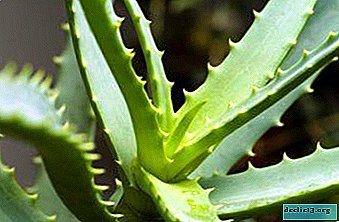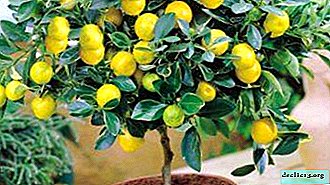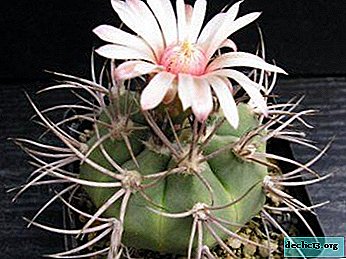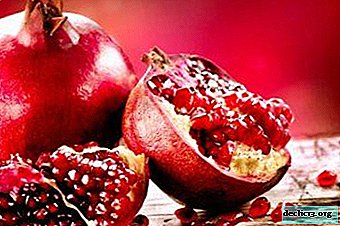Description, useful properties and other features of pomegranate flowers
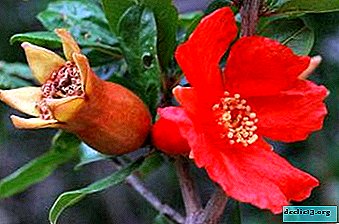
Pomegranate is a fruit tree, the height of which reaches 6 m. It has thin and prickly branches, on which there are light green, glossy leaves and flowers.
It is the latter that are actively used to make medicinal tea. In the article you will find effective recipes for making pomegranate tea at home.
We will also tell who and why such tea helps, and who should avoid its use.
Description of appearance
The only difference between wild and domestic pomegranate in plant height. The home copy grows in the form of a low bush, but the wild one - in the form of a tree. Pomegranate flowers are divided into female and male.
It is in women that fruiting occurs. The female flower bud has a wide base and is presented in the form of a fleshy tube. Its serrated edge remains even on a ripe fruit in the form of a miniature “crown”. Female flowers have a long pistil, which is located at the level of anthers and above. They are formed on the shoots of last year. The ovary is multi-nested, formed from 4-8 fused carpels.
The buds of male flowers are conical, they have a short pistil located below the anthers. These flowers are sterile, so that after they bloom, they fall off.
What color are the petals? As for the garnet color palette, it includes such shades:
- scarlet;
- crimson;
- white.
Photo
Below you will find a photo of a flower of an indoor and wild plant.




When do they appear?
Flowering in pomegranate, which was grown from cuttings, begins in the third year. In the wild, a tree blooms in May, and at home - from early spring to autumn. It is a home bush that blooms 2 times a year:
- for the first time - in April-May;
- in the second - at the beginning of August.
At this time, the entire crown is strewn with bright flowers and unopened buds. The latter looks carelessly crumpled, and when opened, they acquire a majestic and charming look.
How to care for a pomegranate tree?
In order for homemade pomegranate to bloom 2 times a year, it is necessary to properly care for it. And for this following recommendations to be followed:
- For the bush, choose a well-lit place where in summer the temperature will be 22-25 degrees. An ideal place would be a windowsill facing south.
- In summer, the plant should be watered abundantly, and in winter, moisture reduction is reduced.
- Once every 2 weeks from March to August, it is necessary to apply liquid formulations intended for flowering plants.
- For wintering, pomegranates are rearranged in a cooler place, where the temperature regime is 16-18 degrees. In summer, it is advisable to take the bush to fresh air.
- The flowers of a plant are formed only at the tips of strong annual shoots, while weak flowers do not bloom. For this reason, all weak branches will be cut in the spring. The plant tolerates a haircut, so you can form a beautiful tree or voluminous bush.
How and when to collect?
Pomegranate flower harvesting begins during the mass flowering period.. You need to choose those that have not crumbled and are not able to set fruit. They must be dried in the open air, only if there is no direct sunlight. Then dry in the oven and place in a paper bag.
Useful and harmful properties
Chemical composition
 Boric acid.
Boric acid.- Apple acid.
- Succinic acid.
- Lemon acid.
- Wine acid.
- Oxalic acid.
- Vitamin B1.
- Vitamin B2.
- Vitamin B6.
- Vitamin B15.
- Vitamin C.
- Vitamin PP
- Iodine.
- Copper.
- Chromium.
- Phosphorus.
- Manganese.
- Calcium.
- Magnesium.
- Potassium.
- 6 essential amino acids.
- 9 essential amino acids.
To whom and from what helps?
Tea made from pomegranate flowers has a positive effect on the human body.Its benefits are as follows:
- removes toxins, slags and radionuclides;
- increases metabolic processes;
- fights inflammatory diseases of the kidneys, liver, eyes and ears;
- eliminates joint inflammation;
- increases the efficiency of the immune defense, thereby increasing the body's resistance to various infections;
- increases hemoglobin level;
- acts as a prophylactic with respect to the formation of breast cancer in women;
- hematopoiesis normalizes;
- prevents the development of gastrointestinal diseases;
- accelerates the healing process with stomatitis, tonsillitis, gingivitis, pharyngitis;
- It has a calming effect and normalizes the state of the nervous system;
- improves the condition of the skin and hair;
- prevents the development of atherosclerosis;
- Strengthens the muscle tissue of the heart.
Contraindications
- Gastritis, stomach and intestinal ulcer, increased acidity of the stomach.
- Constipation, hemorrhoids, cracks in the anus.
- Children under 1 year.
- Pregnancy.
How to brew?
Tea made from pomegranate flowers is very similar to hibiscus in its taste.Recipes:
- It is necessary to take leaves and flowers in equal proportions, and then pour 10 g of 250 ml of boiling water. Cover the container with a lid and insist 15-20 minutes. At the end, filter the tea and add honey for taste. It can be used to increase immunity, with diarrhea, sore throat, pharyngitis and other inflammatory diseases of the upper respiratory tract.
- You have to collect the flowers, dry them thoroughly, and then grind with a coffee grinder. Add 10 g of powder to black or green tea. Brew for 5 minutes using a steam bath. Take in chilled or hot form. Such a drink will be an excellent prevention of gastrointestinal diseases, strengthen the body and help cure a cold.
Pomegranate flowers are very beneficial for the human body.. They contain many vitamins and minerals that provide reliable protection against many diseases. But before using medicinal tea, you must always consult a doctor.

 Boric acid.
Boric acid.





